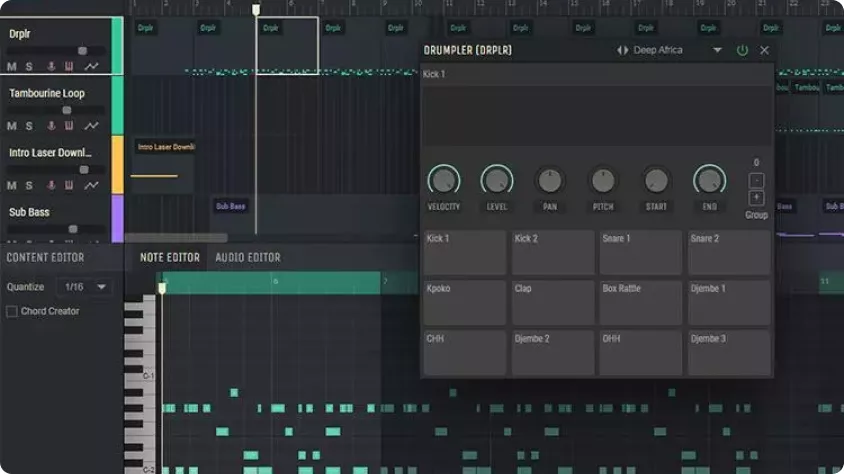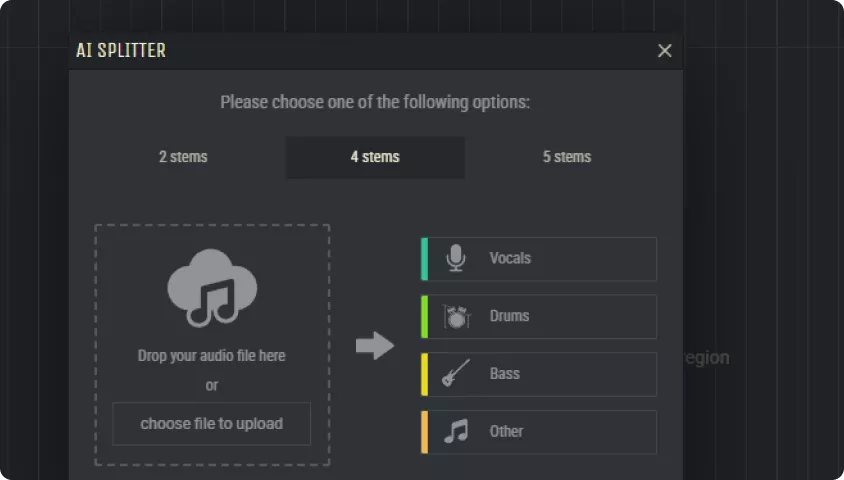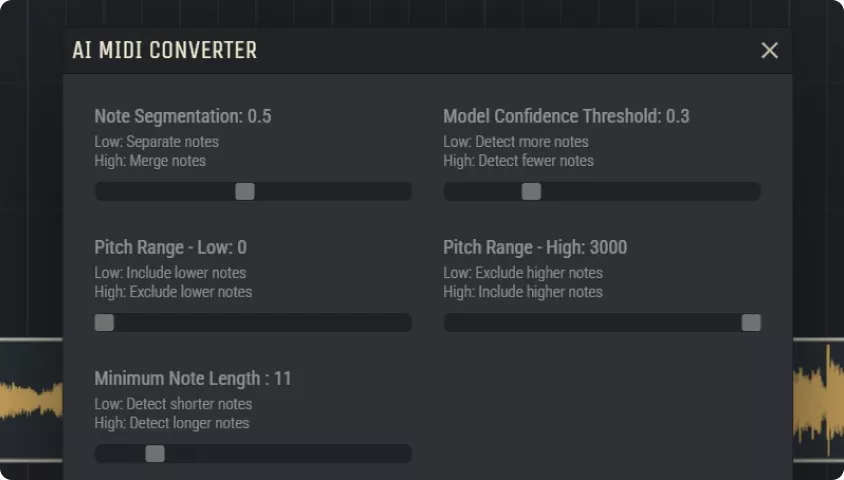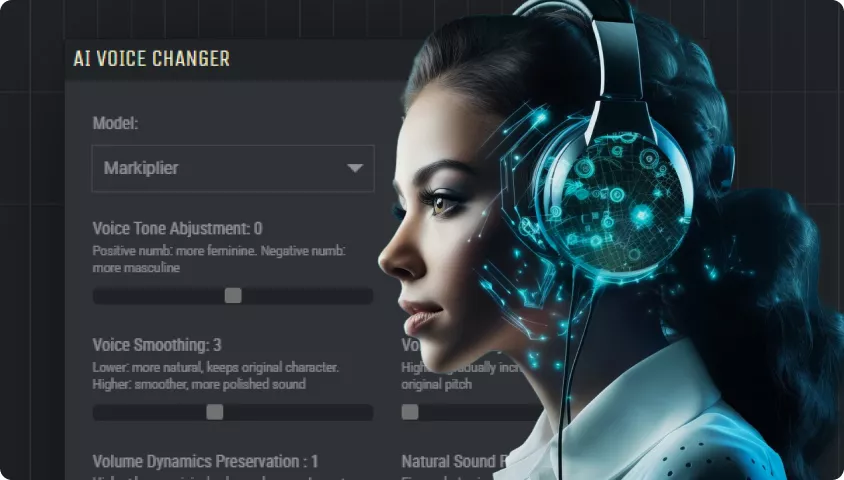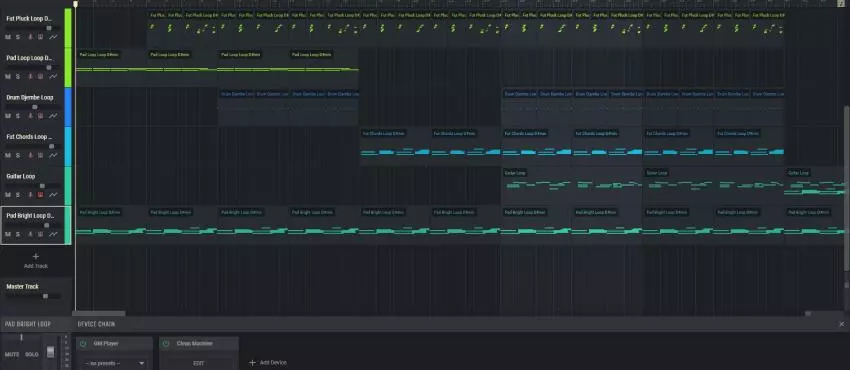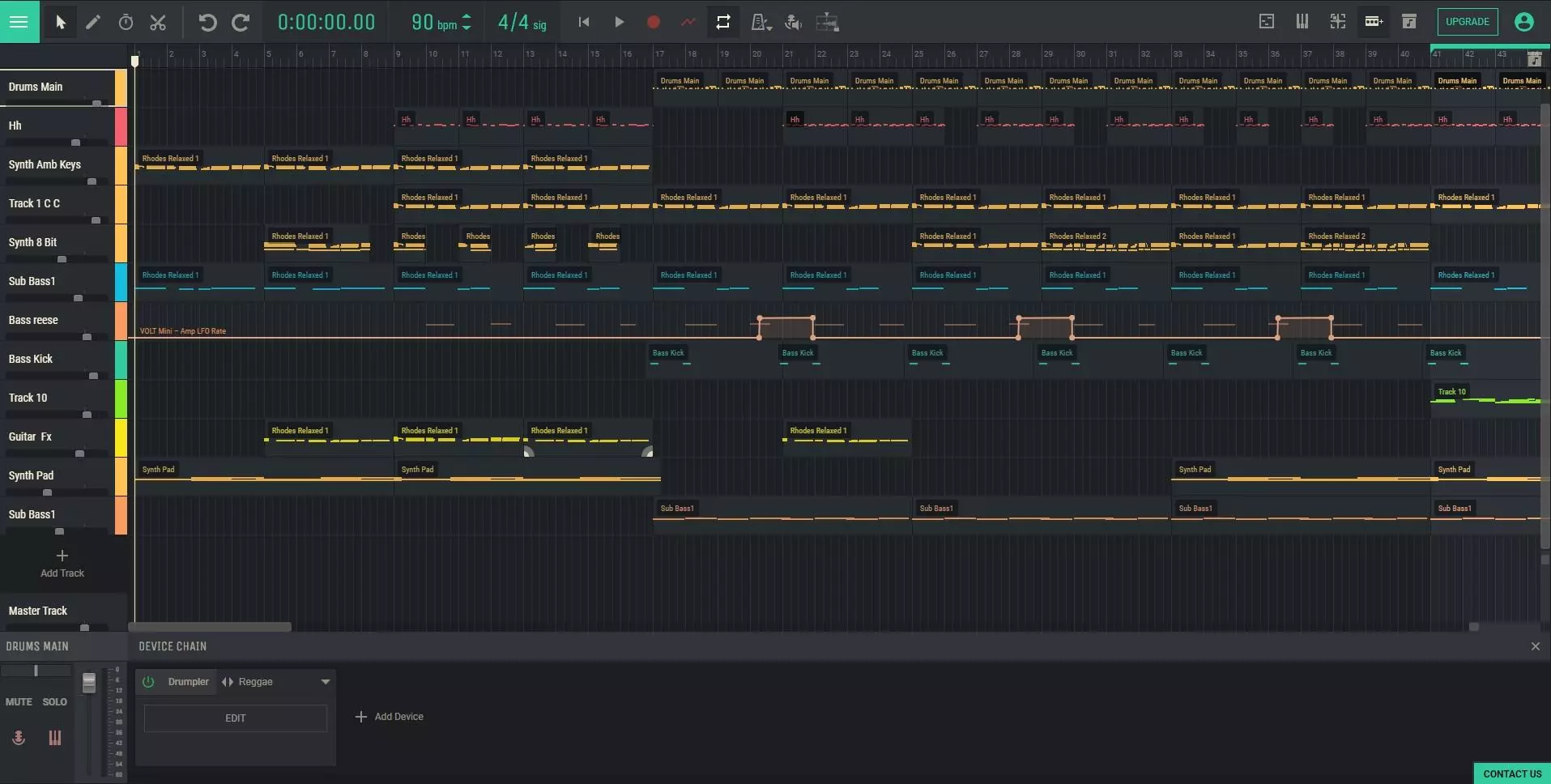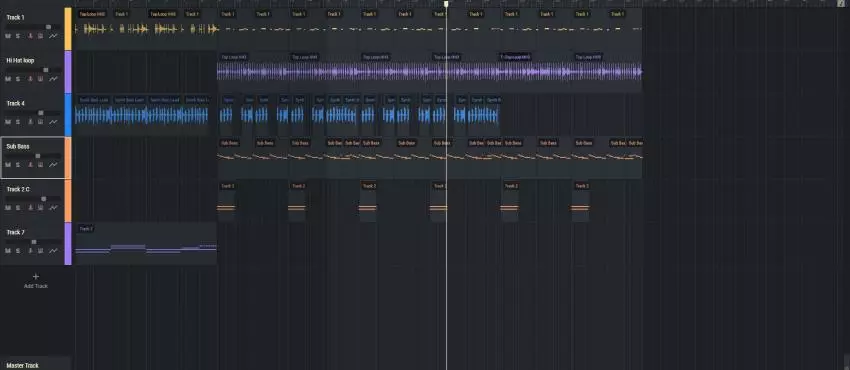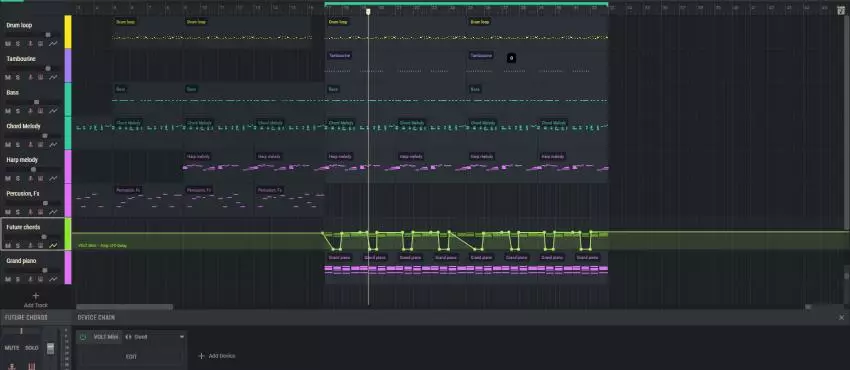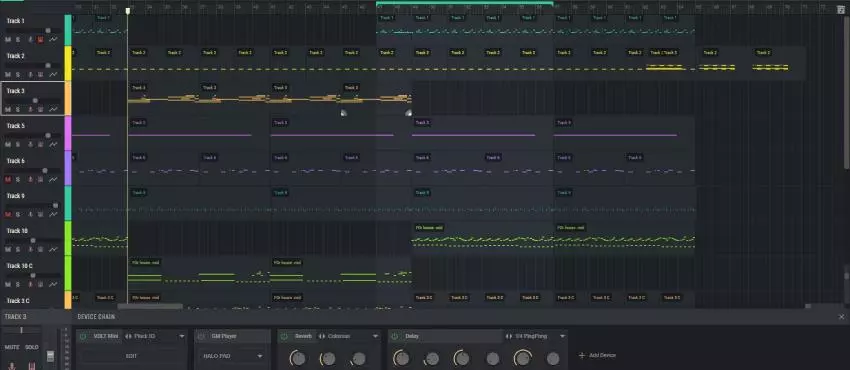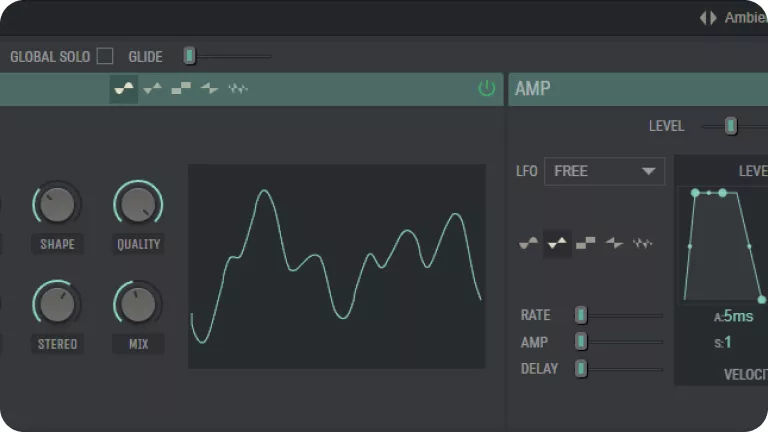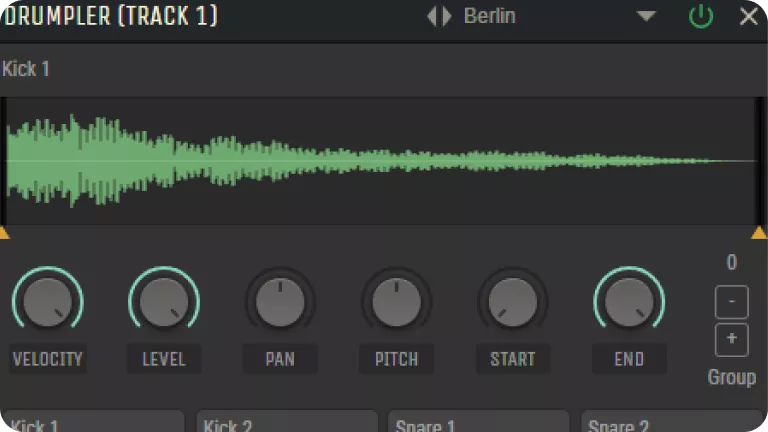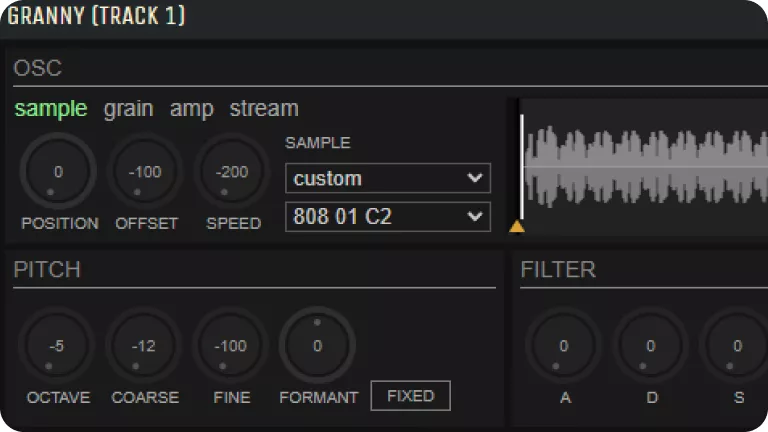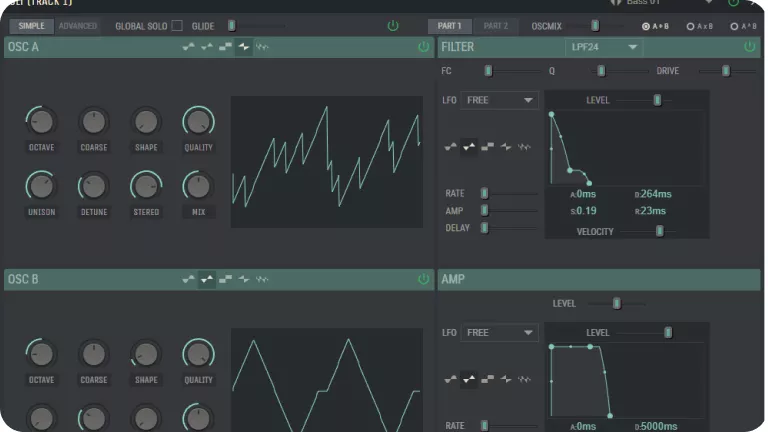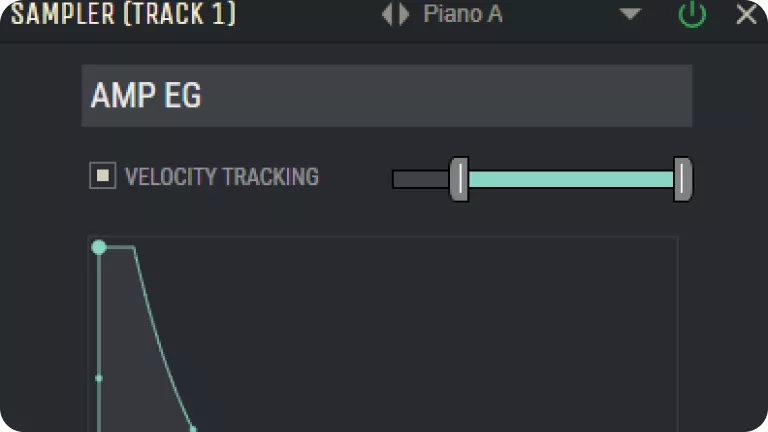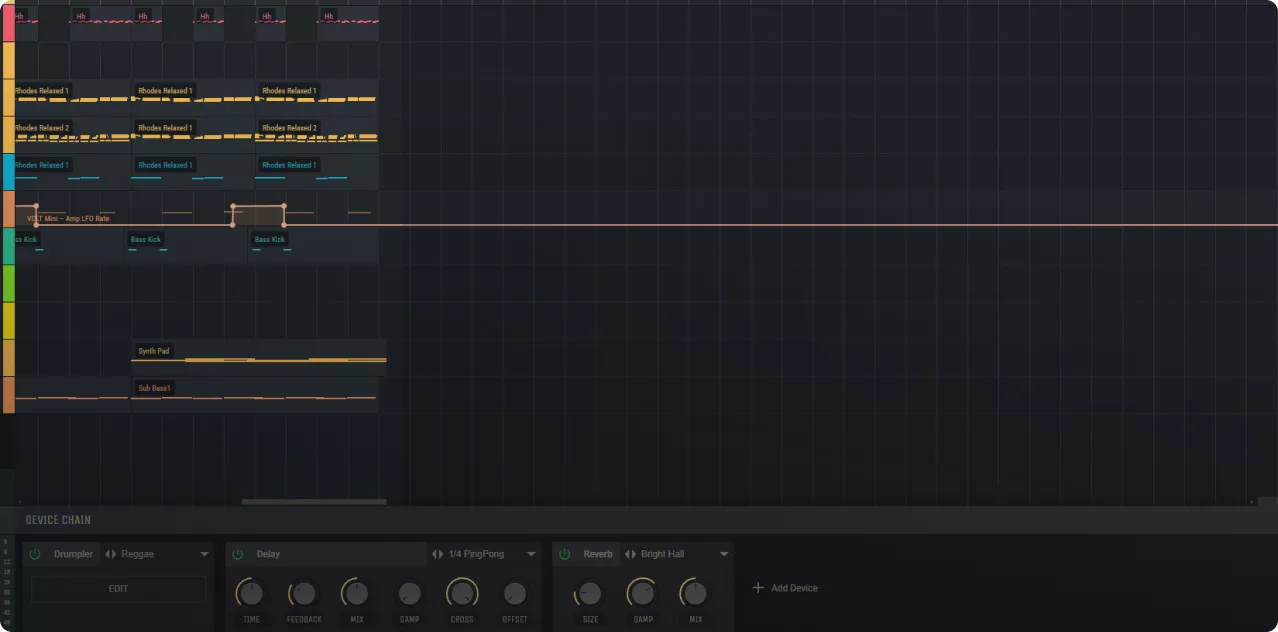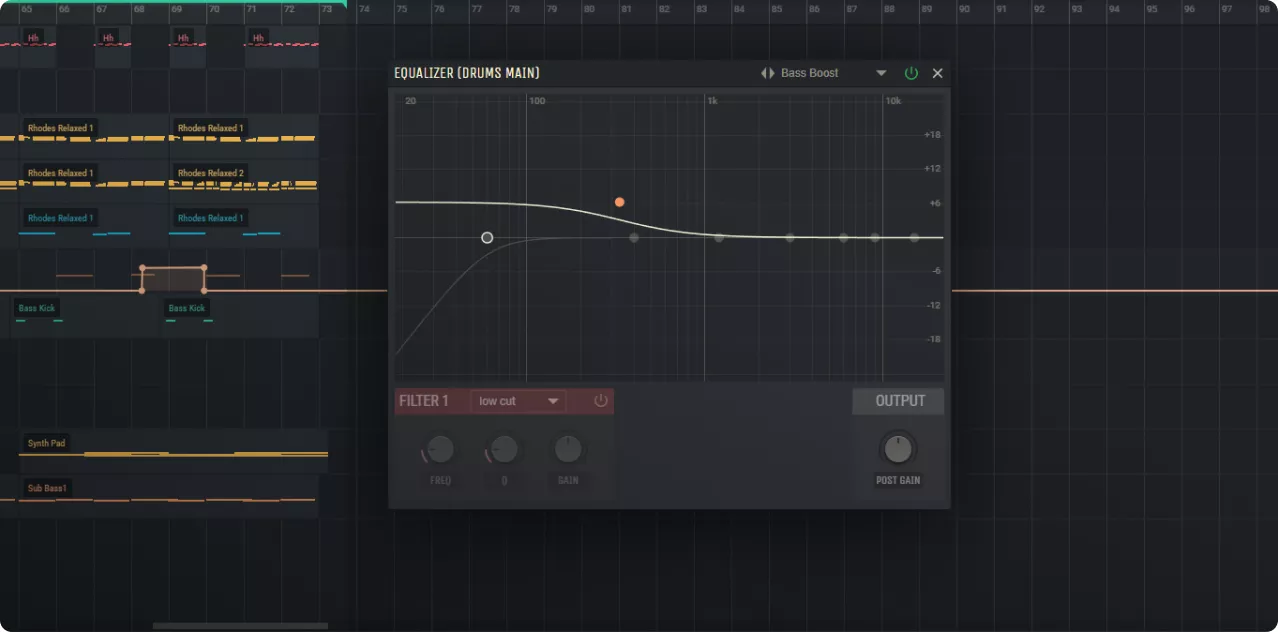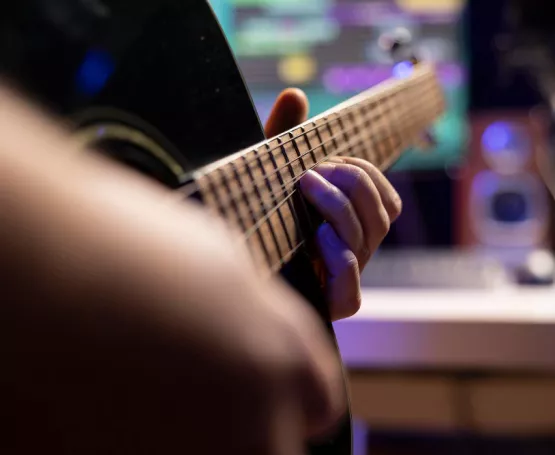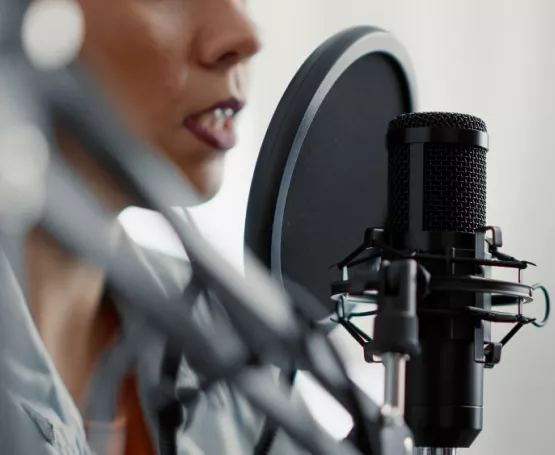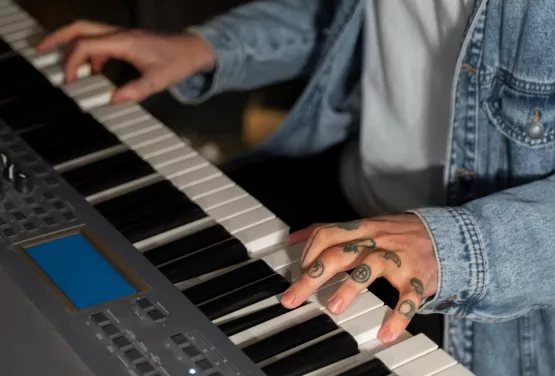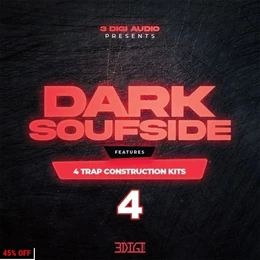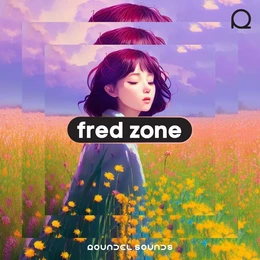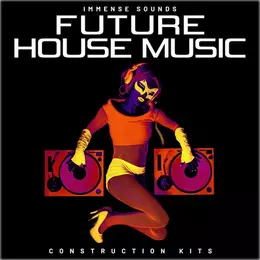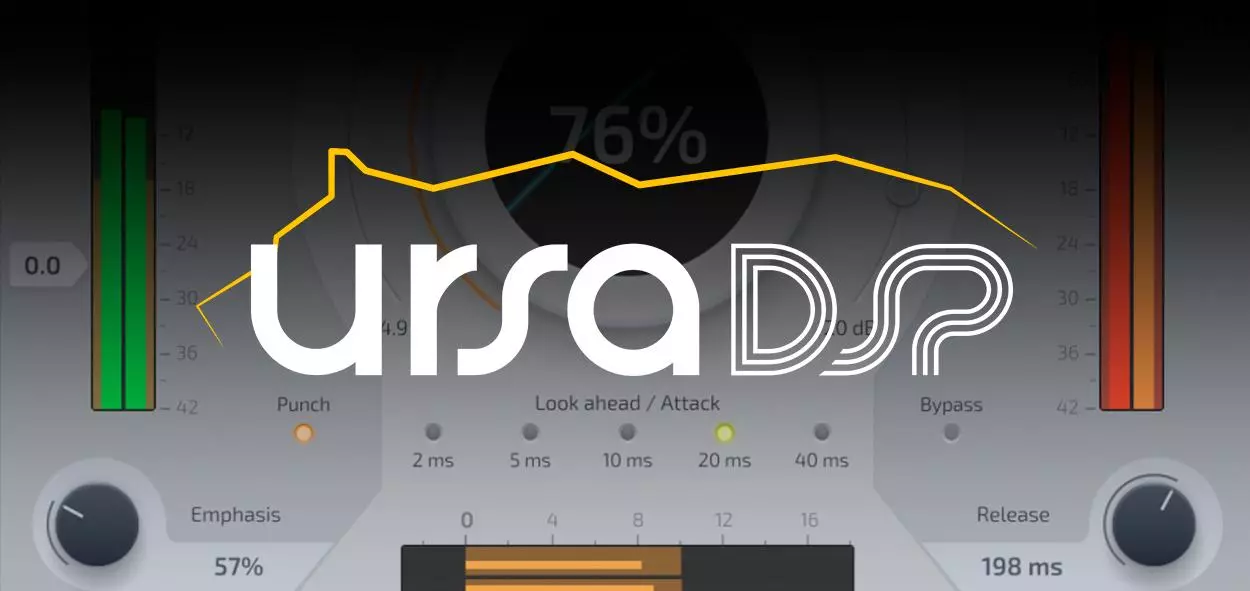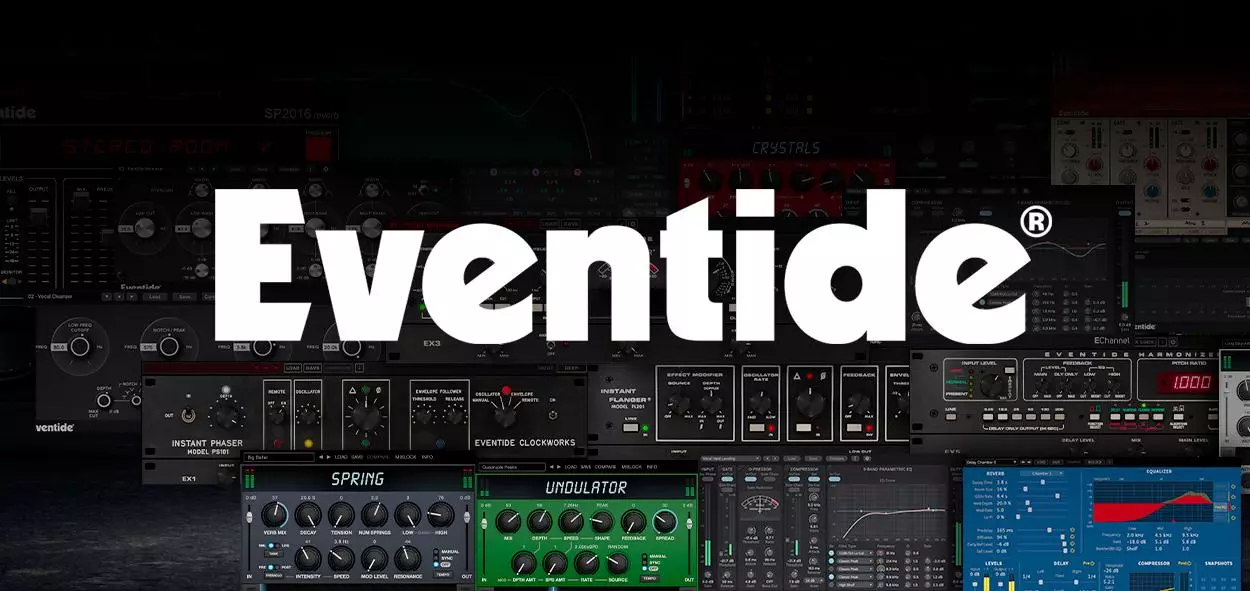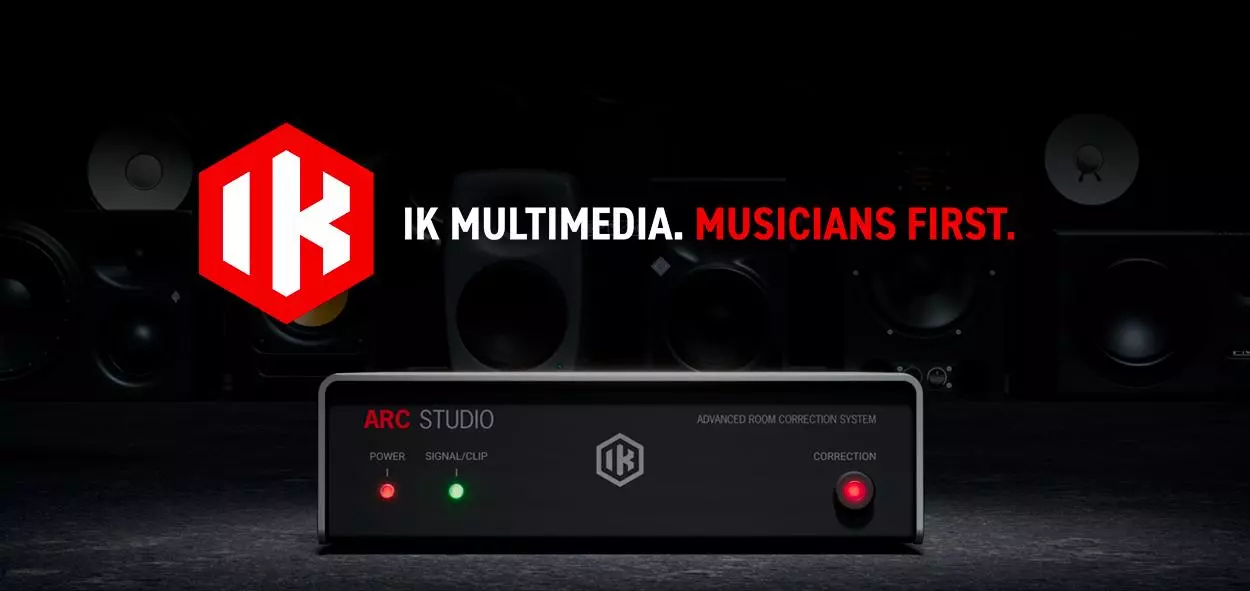Get your project up and running effortlessly with Amped Studio
A wide range of one.shots, construction kits, audio loops and midi files in various genres (Pop, Hip-Hop, Rock, EDM, etc.), which is regularly updated by both our sound designers and the users of the application. Discover a rich sound base that will fill your tracks with depth and scale and make them sound as rich and professional as possible!
Create and record your music online and share it with friends and like-minded people, communicate with them via built-in video communication right while you work. Send your projects to colleagues to collaborate on different parts of them with the ability to constantly adjust them with any changes to achieve the perfect result.
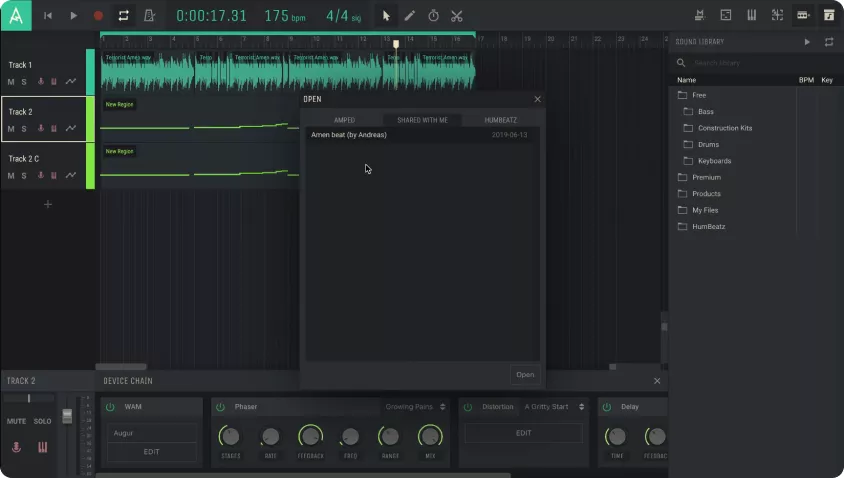
Amped Studio is the only online studio that supports the function of connecting plugins in VST 3.0 format, which significantly expands your capabilities in terms of music production, making the process itself more flexible, simpler and more functional. Now for generating and processing sound not only with standard sequencer tools, but also with third-party plugins that you could use before.
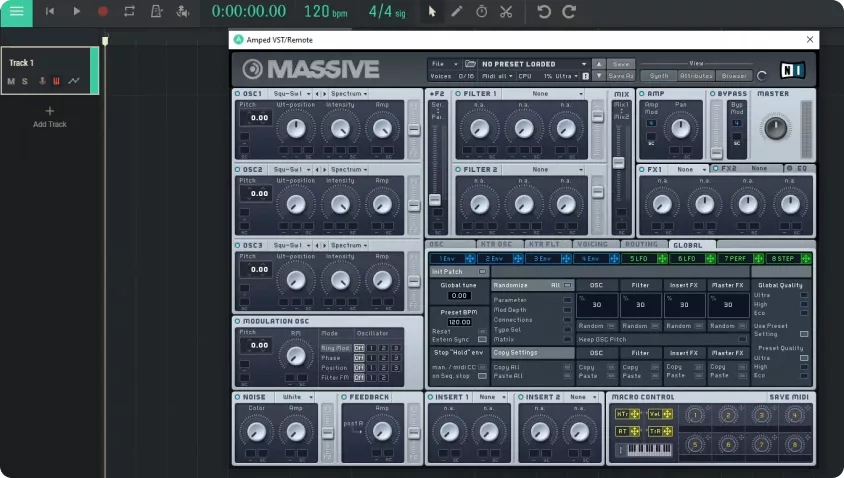
Within the built-in AI, you can generate melodies and arrangements of various styles, convert voices, and convert audio files into ready-made Midi tracks. Generated loops can be split into separate audio tracks and used in different projects. You retain the copyright.

Studio-quality Boost your creative potential with AI-powered tools
Integrate AI advancements into content creation to boost productivity and personal wellness in your process
Start now with AIBegin exploring AmpedStudio to discover its features
Enhance your music with our collection of the studio by transitioning to projects
View all projectsAccess top-tier tools right at your fingertips for a seamless experience
Unleash the full potential of your musical journey with our cutting-edge tools
Get Started NowStudio-quality effects
Unlock the potential of your music with our collection of high-quality studio effects. From classic reverb to modern distortions — we have everything you need to create world-class sound
Start NowAmpedStudio is for everyone
Master Amped Studio
From detailed manuals to video tutorials and FAQs, we’ve got everything you need to become an Amped Studio pro.
Start learning today!
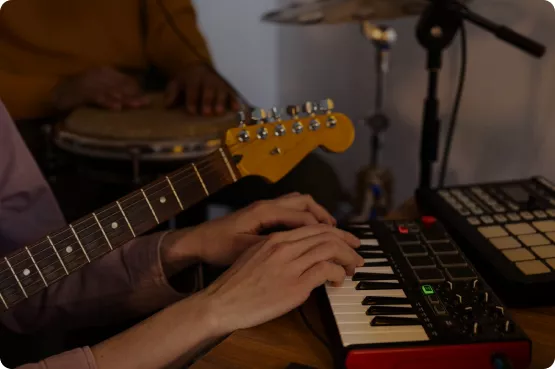
Amped Studio marketplace: sound inspiration for your music
- Wide range of sample packs and song starters
- Unique sound libraries
- Exclusive project files from top artists
Make music without limits. With Amped Studio, your creativity will find a new voice!
go to marketplaceMeet our partners and join to our partnership’s program
Get the latest deals and special offers from our partners
Articles about music

Amped Studio is a powerful online loop maker that lets you loop any audio file right in your browser. There’s nothing to install — just open the studio, drag your sample onto the timeline, select the region you want to repeat, and set the number of loops using the built-in looping tools. Need it smoother? You can trim the clip, adjust the tempo, and apply effects — all within the same project. Try loop music maker now What Are Audio Loops? Audio loops are short audio fragments, usually between 1 to 4 bars, designed to repeat seamlessly. Since the start and end of the clip are crafted to match rhythmically, the playback feels continuous without any abrupt cuts. Loops are the backbone

Making music has never been easier. In 2025, online tools have completely changed the way we produce tracks—no more need for expensive gear or deep technical know-how. Amped Studio is the perfect example: a powerful beat-making platform that lets anyone jump into music production right from their browser. Try Electronic Beat Maker Now The interface is designed to get you started in minutes. No complicated menus or overwhelming tutorials—just click, create, and tweak your sound. Amped Studio comes loaded with built-in synths, drum kits, samples, and loops that you can drag, drop, and customize to fit your style. And because it's browser-based, there's nothing to install—just open it up
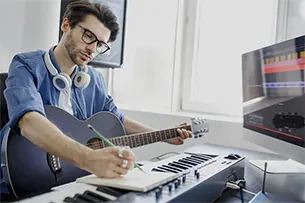
Everyone starts somewhere — and the first step is figuring out what you actually want to do. Maybe you’re into making beats, maybe you want to build full tracks from scratch, or maybe your focus is mixing and mastering. That choice sets the direction for everything that follows. Once that’s clear, it’s time to learn the basics. Understand how a track comes together, how rhythm and melody interact, and why balance between elements matters. You won’t get far without it. One of the best ways to learn is by really listening to music — not casually, but with purpose. Break things down and figure out what makes them work. Forget the idea that you need a fancy studio to make good music. You c
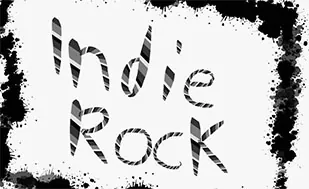
Indie rock first took shape in the early 1980s across the UK, the US, and New Zealand. At the time, the term referred to music released by independent labels, but it soon came to represent a broader aesthetic — raw, experimental, and driven more by vision than by commercial formulas. One of the genre’s earliest foundations was the "Dunedin sound" from New Zealand, with bands like The Chills and The Clean. In the US, college radio stations were instrumental in promoting artists like The Smiths and R.E.M., giving airtime to music that felt outside the mainstream. By the mid-'80s, indie rock had started to take shape as its own scene, boosted by the UK’s NME C86 compilation and the undergrou

Indie music is often perceived as a genre, but in reality it is much more than that – it is an approach to creating music and pursuing a career in music. The term “indie” comes from the word “independent” and originally referred to artists and bands not associated with major record labels. Such musicians produced and distributed their music independently, relying on the principles of creative freedom, independence and experimentation. It was these principles that formed the basis of what eventually became an entire cultural phenomenon. Since the late 1970s, when independent labels began to appear in the UK releasing post-punk and alternative rock, the indie scene began to actively develop

We can talk for a long time about what exactly is at the heart of music — the physics of sound waves, notes, the peculiarities of hearing. All of this really plays a role. But if we talk about what forms the musical fabric, makes it meaningful and expressive, then triads occupy a key place here. A triad in music is not just a combination of three sounds. It is a tool with which a composer or producer can create a mood, build harmony and set the direction of the entire musical idea. It is with triads in music that an understanding of how chords work, how they interact and how they can be used in an arrangement or improvisation begins. Even if you do not play the piano or guitar, but wor
Get more up-to-date information by clicking on the link
View all ArticlesUseful links
Make music online with our powerful, user-friendly studio
Craft your hit with our assistance! We provide all the tools and expertise for your success.
Eager to shine bright? Sign up now and transform your dream into reality!
